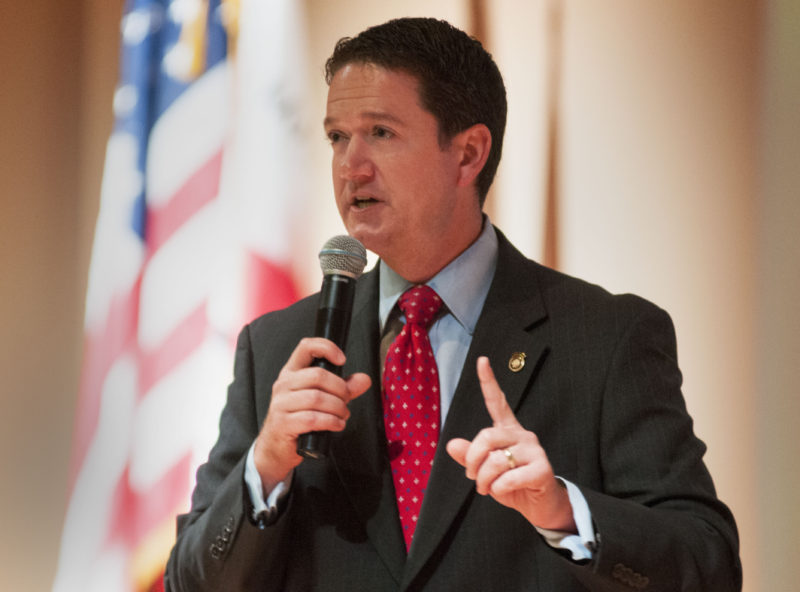Ask any non-Missourian what comes to mind when they think about St. Louis, and the answers you are most likely to hear are: Cardinals, crime, and corruption. Thankfully, the Cardinals are here to stay, but crime and corruption are real problems that have held the region back for too long.
Many of St. Louis’ struggles can be attributed to the fragmented system of government that exists within St. Louis City and County. Together, the City and County are smaller than more than 50 other counties in Missouri. Yet, in less than 600 square miles, there are 113 local government entities, 89 independent municipalities, 55 police departments, 78 municipal courts, and 679 elected municipal officials.

This mass and mess of government is inefficient and exceedingly expensive, costing St. Louis City and County taxpayers $2.5 billion every year. St. Louisans spend significantly more per capita on government than virtually anywhere else in the nation. And what do the citizens of the St. Louis region have to show for it?
Fragmentation has produced too many leaders who lack vision and focus, concentrating on narrow concerns that often run counter to the best interests of the area.
Over the years, many St Louis leaders have fought valiantly for reform, yet there has been very little progress.
It is time for drastic action.
For the past five years, civic leaders from the City and County of St. Louis have studied options for overhauling the region’s antiquated, inefficient government. In January, the task force released its final recommendation: merging St. Louis City and County into a single metropolitan government, consolidating many services while allowing existing municipalities to continue operating with limited authority.
While St. Louis is often known for its political liberalism, this recommendation is surprisingly conservative. Among other things, the reunification of the city and county would: 1) save taxpayers hundreds of millions of dollars by consolidating and eliminating redundant services, 2) result in significant property tax cuts for county residents, 3) phase out the City of St. Louis earnings tax, 4) remove municipalities’ ability to levy new sales taxes, 5) eliminate revenue-generating speed traps, 6) eliminate incentives for municipalities to offer corporate welfare, and 7) strengthen public safety (while also removing St Louis from the annual “most dangerous cities” list).
In short, reunification would actually reduce government in a meaningful way—and this should make every conservative cheer.
Of course, change is hard, and every conservative understands that any proposed governmental reform will encounter resistance from those who have a vested interest in the existing system.
Not surprisingly, the most vocal opponents to this proposal are those who depend on government largesse, and whose lucrative, taxpayer-funded jobs are unnecessary and often redundant. On the other hand, the most ardent supporters of reunification are the men and women who do business in the region— job creators and business owners whose livelihoods often depend on getting government out of the way.
The status quo crowd has focused their initial opposition to reunification on the fact that the plan requires a statewide vote for implementation. But the truth is this: the proposal creates a new form of local government in Missouri, consolidating police departments and the courts. These are constitutional changes that require a statewide vote.
Furthermore, over the past several years, the Missouri General Assembly has continually and repeatedly reined in self-destructive liberal policies passed by cities such as St Louis. Most recently, the state legislature stepped in to preempt minimum wage increases and plastic bag bans. Like the General Assembly, state voters have the right and obligation to step in when local action (or inaction) becomes detrimental to the entire state. Ironically, some of the same people who cheer when the General Assembly preempts liberal local policies are now claiming that state voters do not have similar authority.
I believe that Missouri voters should and must act.
Failure of the region would continue to be borne by all Missourians—not just through lost wealth and opportunity, but quite possibly through the loss of their own tax dollars. This is not a far-fetched scenario. In fact, in recent years, states all across the country have been forced to take over or bail out bankrupt cities hollowed out by decades of mismanagement. Missourians cannot let St. Louis go the way of Detroit, Atlantic City, or Hartford. Reunifying St. Louis City and County will ensure Missouri taxpayers are never on the hook for a bailout of the city.
The St. Louis region is the primary economic engine that drives the State of Missouri, and its success is in the best interests of all Missourians. But over the last twenty plus years, the St. Louis region has stagnated in both population and economic growth. This must change. With its Fortune 500 companies, world-class educational and cultural institutions, and geographic advantages, there is no reason that St. Louis should not be a world-class city once more—a place every Missourian can be proud of.
The only thing holding St. Louis back is the government of both its city and county. To borrow a phrase from President Ronald Reagan, “In this present crisis, government is not the solution to our problem, government is the problem.”
Too often these days, our political leaders’ first impulses when confronted with a problem are to expand governmental power and authority. It is rare to find serious proposals that reflect conservative priorities by seeking to reduce governmental power and return tax dollars to citizens. But that is precisely what the unification of St. Louis City and County would achieve.
Conservative Missourians have a once-in-a-lifetime opportunity to imprint our values within the fabric of a region in desperate need of reform. I hope that we seize it, because I am convinced that this is the only way St. Louis will grow and thrive once again.
Tim Jones was a Republican member of the Missouri House of Representatives, representing the 110th district, which encompasses a portion of St. Louis County. Jones served as the House Majority Leader for the 96th General Assembly and as Speaker of the House from 2012-2015.





